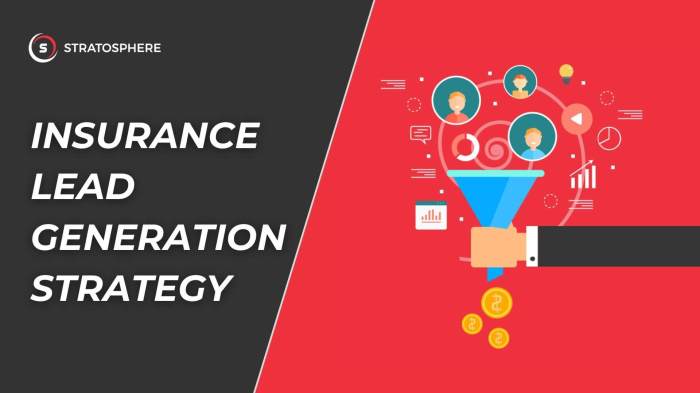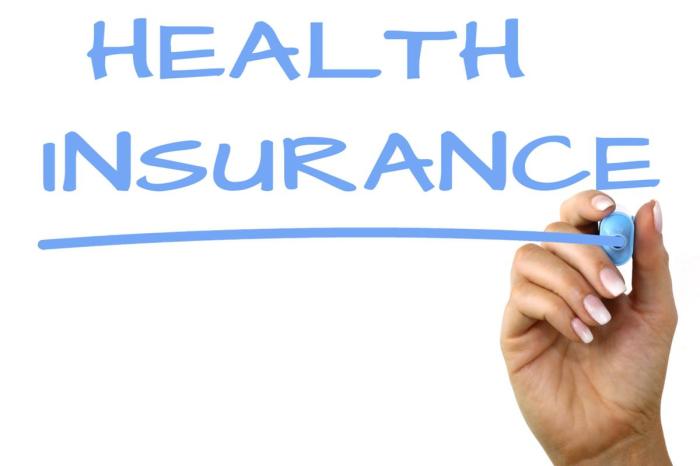In the ever-evolving healthcare landscape, health insurance providers face the constant challenge of attracting and retaining customers. With fierce competition and an abundance of options available, generating health insurance leads has become a critical aspect of driving business growth and success.
This comprehensive guide delves into the intricacies of lead generation for health insurance products and services. We’ll explore effective strategies to identify your target audience, craft a compelling value proposition, and leverage various marketing channels to reach and engage potential customers.
From optimizing your online presence to nurturing leads through personalized communication, this guide will equip you with the knowledge and techniques necessary to generate a steady stream of qualified leads that convert into loyal customers.
Lead Generation Strategies

To ensure a steady stream of potential customers, health insurance companies need effective strategies to generate leads. These strategies involve utilizing various channels to reach and engage individuals who may be interested in purchasing health insurance policies.
By implementing these strategies, health insurance companies can expand their customer base, increase sales, and achieve long-term growth.
Online Advertising
Online advertising is a powerful tool for reaching a large and targeted audience. Health insurance companies can use platforms like Google AdWords, Facebook Ads, and Instagram Ads to display ads to individuals who are searching for health insurance-related information or have expressed an interest in health insurance products.
Social Media
Social media platforms, such as Facebook, Twitter, and LinkedIn, provide an excellent opportunity for health insurance companies to connect with potential customers. By creating engaging content, running social media ads, and interacting with followers, companies can generate leads and build relationships with potential customers.
Email Marketing
Email marketing is a cost-effective way to reach and nurture leads. Health insurance companies can collect email addresses through their website, social media, and other channels, and then send targeted emails to promote their products and services.
Content Marketing
Content marketing involves creating and distributing valuable, relevant, and consistent content to attract and engage a clearly defined audience. By providing potential customers with informative and helpful content, such as blog posts, articles, infographics, and videos, health insurance companies can establish themselves as thought leaders and generate leads.
Target Audience Identification

Understanding your target audience is essential for effectively marketing health insurance products. Here are some tips for identifying and understanding your target audience:
Age
Age is a key factor to consider when identifying your target audience. Different age groups have different health insurance needs and preferences. For example, younger adults may be more interested in plans with lower premiums, while older adults may be more concerned with plans that offer comprehensive coverage.
Health Status
The health status of your target audience is also an important consideration. People with pre-existing conditions may need different types of health insurance plans than those who are healthy. It’s important to understand the health status of your target audience so that you can offer them the plans that best meet their needs.
Income Level
Income level is another factor to consider when identifying your target audience. People with higher incomes may be able to afford more comprehensive health insurance plans, while those with lower incomes may need more affordable options. It’s important to understand the income level of your target audience so that you can offer them plans that fit their budget.
Lifestyle
The lifestyle of your target audience can also influence their health insurance needs. For example, people who are active and healthy may be more interested in plans that offer preventive care benefits, while those who have sedentary lifestyles may be more interested in plans that offer coverage for chronic conditions.
Compelling Value Proposition

In today’s competitive health insurance market, creating a compelling value proposition that differentiates your product or service from competitors is crucial for attracting and retaining customers. A strong value proposition should highlight the unique benefits and advantages that make your offering stand out and provide a compelling reason for prospects to choose you.
To develop a compelling value proposition, consider the following strategies:
Focus on Customer Needs
Understand your target audience’s needs, concerns, and pain points. Tailor your value proposition to address these specific issues and demonstrate how your product or service can solve their problems or improve their lives.
Unique Selling Proposition
Identify what makes your health insurance product or service unique and different from others in the market. This could be a specific feature, benefit, or approach that sets you apart from competitors.
Quantifiable Benefits
Use concrete and measurable benefits to support your value proposition. For example, highlight how your product can save customers money on premiums, provide broader coverage, or offer better customer service.
Personalization
Personalize your value proposition to resonate with individual prospects. Tailor your messaging to address their specific needs and interests, showing how your product or service can benefit them personally.
Clear and Concise
Keep your value proposition clear, concise, and easy to understand. Avoid jargon or technical terms that might confuse or alienate potential customers.
Proof and Credibility
Provide proof and credibility to support your value proposition. This could include testimonials from satisfied customers, case studies demonstrating the effectiveness of your product or service, or industry recognition and awards.
Emotional Appeal
Incorporate emotional appeal into your value proposition to connect with prospects on a personal level. Create a sense of urgency or excitement about your product or service and show how it can make a positive difference in their lives.
Call to Action
Include a clear call to action that encourages prospects to take the next step, such as visiting your website, requesting a quote, or contacting your sales team. Make it easy for them to take action and learn more about your offering.
Content Creation and Distribution

Creating compelling content is the foundation of successful lead generation in the health insurance industry. Your content should educate, engage, and resonate with your target audience, driving them towards your insurance offerings.
A diverse range of content formats can effectively reach and capture the attention of potential customers. Blog posts, articles, videos, infographics, and social media posts are all valuable tools for delivering your message.
Content Formats
- Blog Posts and Articles: Share informative and valuable content that addresses common health insurance questions, industry trends, and personal finance topics. These pieces allow you to showcase your expertise and establish yourself as a trusted resource.
- Videos: Create engaging videos that explain complex health insurance concepts in a simple and visually appealing manner. Testimonials from satisfied customers can also be powerful in building trust and credibility.
- Infographics: Design visually appealing infographics that present health insurance information in an easy-to-understand format. These are highly shareable on social media and can help you reach a wider audience.
- Social Media Posts: Utilize social media platforms to share snippets of your content, industry news, and engaging visuals. Engage with your audience through interactive polls, quizzes, and contests to increase engagement and visibility.
Search Engine Optimization ()
Optimizing your health insurance-related content for search engines is essential to improve organic visibility and attract targeted traffic to your website. By incorporating relevant s, optimizing page elements, and building high-quality backlinks, you can enhance your search engine rankings and drive more qualified leads to your business.
Research
Conduct thorough research to identify relevant search terms and phrases related to health insurance. Use research tools to analyze search volume, competition, and user intent. Incorporate these s naturally into your content, including page titles, headings, and body text, to improve your chances of appearing in search results.
Content Optimization
Optimize your content to improve its relevance and appeal to both users and search engines. Ensure your content is well-written, informative, and engaging. Use clear and concise language, avoiding jargon or technical terms that may alienate readers. Structure your content with relevant headings and subheadings to enhance readability and make it easier for search engines to understand the content’s organization.
On-Page
Pay attention to on-page elements to improve your website’s ranking. Optimize page titles and meta descriptions to accurately reflect the content of each page and include relevant s. Use alt tags to describe images and help search engines understand their content.
Ensure your website loads quickly, as page speed is a ranking factor. Implement structured data markup to help search engines better understand the content on your pages and display rich snippets in search results.
Link Building
Build high-quality backlinks from reputable websites to improve your website’s authority and relevance in the eyes of search engines. Reach out to industry influencers and bloggers to contribute guest posts or interviews, and include links back to your website. Participate in relevant online forums and communities, providing valuable insights and sharing links to your content.
Monitor your backlink profile and disavow any spammy or low-quality links that may harm your rankings.
Track and Analyze
Regularly track and analyze your website’s performance to monitor the effectiveness of your efforts. Use analytics tools to track website traffic, rankings, and conversion rates. Analyze the data to identify areas for improvement and make necessary adjustments to your strategy.
Stay updated with the latest trends and algorithm updates to ensure your website remains visible and competitive in search results.
Paid Advertising

Paid advertising offers a direct and targeted approach to reach potential health insurance customers. By utilizing platforms like Google Ads, social media ads, and display ads, health insurance providers can effectively engage individuals seeking health coverage.
Through Google Ads, health insurance providers can create targeted campaigns that appear on search engine results pages (SERPs) when users search for relevant s related to health insurance. This allows providers to reach individuals actively looking for health insurance plans, increasing the likelihood of conversions.
Google Ads
- Conduct thorough research to identify relevant search terms and phrases used by potential customers.
- Develop compelling ad copy that resonates with your target audience and highlights the unique benefits of your health insurance plans.
- Utilize ad extensions to provide additional information, such as contact details, location, and call-to-action buttons, to enhance the visibility and engagement of your ads.
- Monitor and adjust your campaigns regularly to optimize performance, track conversions, and refine your targeting strategies.
Social Media Ads
Social media platforms, such as Facebook, Instagram, and LinkedIn, offer a powerful avenue to connect with potential health insurance customers. By leveraging social media ads, health insurance providers can target specific demographics, interests, and behaviors to deliver personalized messages and promotions.
- Create visually appealing and engaging ad creatives that capture attention and align with your brand identity.
- Craft targeted ad campaigns that resonate with each platform’s unique user base and align with their interests and preferences.
- Utilize social media’s retargeting capabilities to reach individuals who have previously interacted with your brand or visited your website.
- Monitor and analyze ad performance metrics, such as impressions, clicks, and conversions, to optimize your campaigns and maximize ROI.
Display Ads
Display ads provide a visual and interactive way to reach potential health insurance customers across various websites and online platforms. These ads can be placed on relevant websites, blogs, and online publications to capture the attention of individuals browsing the internet.
- Design visually appealing and attention-grabbing display ads that align with your brand identity and communicate your value proposition.
- Utilize programmatic advertising platforms to target specific demographics, interests, and behaviors, ensuring your ads are shown to the most relevant audience.
- Monitor and optimize your display ad campaigns based on performance metrics, such as impressions, clicks, and conversions, to improve their effectiveness and ROI.
- Test different ad formats, such as banner ads, native ads, and video ads, to determine the most effective format for your target audience.
Landing Page Optimization
To effectively convert visitors into leads, it’s essential to optimize your landing pages for health insurance products or services. Here are key practices to consider:
Design and structure your landing page to align with your target audience’s needs and preferences. Ensure it’s visually appealing, easy to navigate, and mobile-responsive.
Clear Calls to Action
- Include prominent and compelling calls to action (CTAs) above the fold, such as “Get a Quote,” “Learn More,” or “Contact Us.” Make them visually distinct and easy to locate.
- Use actionable language that encourages immediate action. Avoid vague or generic CTAs like “Click Here.” Personalize the CTA to align with the user’s intent.
Persuasive Copywriting
- Craft compelling and persuasive copy that resonates with your target audience. Highlight the unique benefits and value proposition of your health insurance product or service.
- Address common pain points and concerns related to health insurance, and demonstrate how your offering provides solutions to those challenges.
- Use clear, concise, and easy-to-understand language. Avoid jargon and technical terms that might alienate or confuse visitors.
Email Marketing Campaigns

Harness the power of email marketing to nurture health insurance leads, showcase product benefits, and propel conversions. Craft engaging email campaigns that resonate with target audiences, fostering trust and driving them toward becoming loyal customers.
Cultivate personalized email journeys that cater to individual preferences and lead stages. Utilize automation tools to deliver timely and relevant content, nurturing leads through the sales funnel.
Effective Subject Lines
Captivate recipients’ attention with compelling subject lines that pique their curiosity and entice them to open your emails. Experiment with different formats, including questions, personalization, and urgency.
Compelling Content
Craft email content that resonates with your target audience. Utilize storytelling, testimonials, and clear calls to action to engage readers and drive conversions. Personalize emails with dynamic content, addressing recipients by name and showcasing products or services that align with their needs.
Segmentation and Targeting
Segment your email list based on demographics, behavior, and interests to deliver highly targeted and personalized messages. Utilize email marketing platforms that offer advanced segmentation capabilities, allowing you to tailor campaigns to specific audience segments.
Performance Monitoring and Optimization
Continuously monitor email campaign performance metrics such as open rates, click-through rates, and conversion rates. Analyze data to identify areas for improvement and optimize campaigns accordingly. A/B test different subject lines, email content, and call-to-action buttons to determine what resonates best with your audience.
Social Media Engagement

In the digital era, social media platforms provide a powerful avenue for connecting with potential health insurance customers and building meaningful relationships. By engaging with your target audience on social media, you can increase brand awareness, generate leads, and drive conversions.
To effectively engage with potential customers on social media, consider the following strategies:
Content Sharing
Regularly share valuable and informative content that resonates with your target audience. This could include health tips, industry news, customer testimonials, and engaging videos. Use a mix of content formats to keep your audience engaged, such as blog posts, infographics, videos, and interactive polls.
Responding to Inquiries
Promptly respond to inquiries, comments, and messages from potential customers on social media. Demonstrating responsiveness and providing helpful answers can foster trust and build relationships. Use social media as a platform to provide exceptional customer service and address any concerns or questions your audience may have.
Running Contests or Giveaways
Organize contests or giveaways to generate excitement and attract new followers. Offer prizes that align with your target audience’s interests, such as gift cards, health and wellness products, or free consultations. Contests and giveaways can help expand your reach, increase engagement, and generate buzz around your brand.
Lead Nurturing and Conversion
Nurturing leads is vital in the health insurance industry, where customers often require time and guidance to make informed decisions. This section explores effective techniques to nurture health insurance leads, increase engagement, and drive conversions.
Personalized Communication
- Tailor messages and recommendations based on lead demographics, preferences, and past interactions.
- Segment leads into specific groups based on their needs, allowing for targeted communication.
- Address leads by name, demonstrating a personal touch and building rapport.
Follow-up Emails
- Automate email sequences that deliver valuable content, updates, and reminders at strategic intervals.
- Personalize email subject lines and body copy to capture attention and encourage opens.
- Incorporate lead magnets, such as guides, whitepapers, or webinars, to provide value and entice engagement.
Retargeting Campaigns
- Use retargeting ads to reconnect with leads who have visited your website or interacted with your brand.
- Display relevant ads across multiple channels, reminding leads of your offerings and encouraging them to take action.
- Segment retargeting campaigns based on lead behavior, ensuring messages are tailored and impactful.
Last Point

Generating health insurance leads is a multifaceted endeavor that requires a strategic and comprehensive approach. By implementing the tactics Artikeld in this guide, you can effectively reach your target audience, showcase the value of your offerings, and nurture leads through personalized communication.
Remember, lead generation is an ongoing process that requires continuous monitoring, adaptation, and optimization. By staying attuned to market trends, customer preferences, and technological advancements, you can refine your lead generation strategies and consistently attract high-quality leads that drive business growth and success.
Frequently Asked Questions
How can I identify my target audience for health insurance products?
To identify your target audience, consider factors such as age, health status, income level, lifestyle, and specific health concerns. Analyze market data, conduct surveys, and leverage social media insights to gain a deep understanding of your potential customers’ needs, preferences, and pain points.
What makes a compelling value proposition for health insurance?
An effective value proposition should highlight the unique benefits and advantages of your health insurance product or service. Focus on tangible benefits like comprehensive coverage, competitive premiums, and exceptional customer service. Clearly communicate how your offering addresses the specific needs and concerns of your target audience.
How can I create engaging content that resonates with potential health insurance customers?
Craft content that educates, informs, and resonates with your target audience. Utilize various formats such as blog posts, articles, videos, infographics, and social media posts. Provide valuable insights into health and wellness, compare different health insurance plans, and offer tips for making informed decisions.
Ensure your content is well-researched, easy to understand, and shareable across multiple platforms.



